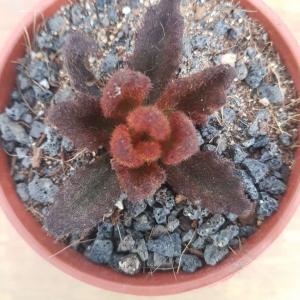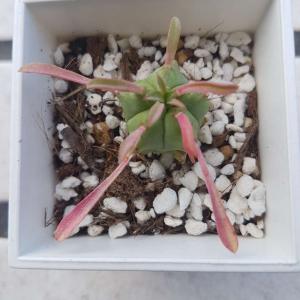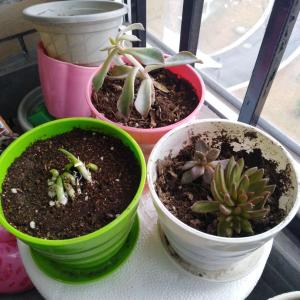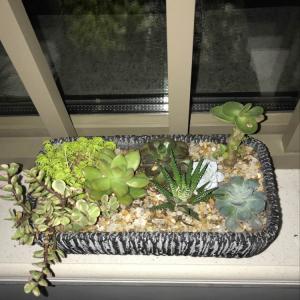文章
Miss Chen
2017年12月26日

Description: This perennial plant is 3-4' tall and unbranched, except for the upper flowering stems. The stems are covered with white hairs. The opposite leaves are up to 5" long and 1" across, occasionally with small teeth along the margins. They are usually dark green, lanceolate to narrowly ovate, and pubescent. There are three conspicuous veins that run along the length of each leaf. The rather flat inflorescence consists of numerous heads of small white flowers and their buds. These flowers are dull white and individually only 1/8" (3 mm.) across. There is little or no floral scent. The blooming period occurs from late summer to early fall, and lasts about 1-1½ months. The achenes develop small tufts of white or light brown hair; they are dispersed by the wind. This plant may spread vegetatively through rhizomes.
Cultivation: The preference is full or partial sun, and mesic to dry conditions. The soil can contain significant amounts of loam, clay, or gravel; soil with a high pH is tolerated. Drought tolerance is good, although the plant may wilt. Tall Boneset is very easy to grow, and competes well against other plants. It is usually not affected by foliar disease.
Range & Habitat: The native Tall Boneset occurs in most of Illinois, except some southern counties (see Distribution Map). It is a common plant. Habitats include mesic to slightly dry black soil prairies, clay prairies, gravel prairies, savannas, thickets, openings in upland forests, dry banks of lakes, limestone glades, pastures and abandoned fields, fence rows, vacant lots, and areas along railroads. This plant favors disturbed areas, where it may form large colonies.

Faunal Associations: The nectar of the flowers attracts many kinds of insects, including long-tongued bees, short-tongued bees, wasps, flies, small butterflies, skippers, beetles, and plant bugs. Among these, wasps and flies are particularly common visitors. The wasp visitors include Paper wasps, Thread-Waisted wasps, bee wolves (Philanthus spp.), Scoliid wasps, Larrine wasps, Sand wasps, Spider wasps, and others. Fly visitors include Syrphid flies, bee flies, Tachinid flies, Muscid flies, and others. The caterpillars of several moths feed on various parts of Tall Boneset and closely related plants, including Haploa clymene (Clymene Moth), Phragmatobia lineata (Lined Ruby Tiger Moth), Carmenta bassiformis (Eupatorium Borer Moth; bores into roots), and Schinia trifascia (Three-Lined Flower Moth; eats flowers & seed capsules). Mammalian herbivores, including livestock, shun the bitter-tasting leaves of this plant; consequently, it tends to flourish in pastures.

Photographic Location: The photographs were taken at a flower garden along a sidewalk in Urbana, Illinois, and in a vacant lot near the same city.
Comments: Tall Boneset often competes directly with Solidago canadensis (Canada Goldenrod) in disturbed areas, although it prefers slightly drier areas. The two plants appear similar to each other prior to bloom, although the former has darker leaves. This plant provides some white color to a fall landscape that is often dominated by forbs with yellow flowers and the brown color of dried-out grasses. This is the easiest boneset to grow in dry sunny areas. Some people may mistake this plant for a weed, which it is to some extent.
Cultivation: The preference is full or partial sun, and mesic to dry conditions. The soil can contain significant amounts of loam, clay, or gravel; soil with a high pH is tolerated. Drought tolerance is good, although the plant may wilt. Tall Boneset is very easy to grow, and competes well against other plants. It is usually not affected by foliar disease.
Range & Habitat: The native Tall Boneset occurs in most of Illinois, except some southern counties (see Distribution Map). It is a common plant. Habitats include mesic to slightly dry black soil prairies, clay prairies, gravel prairies, savannas, thickets, openings in upland forests, dry banks of lakes, limestone glades, pastures and abandoned fields, fence rows, vacant lots, and areas along railroads. This plant favors disturbed areas, where it may form large colonies.

Faunal Associations: The nectar of the flowers attracts many kinds of insects, including long-tongued bees, short-tongued bees, wasps, flies, small butterflies, skippers, beetles, and plant bugs. Among these, wasps and flies are particularly common visitors. The wasp visitors include Paper wasps, Thread-Waisted wasps, bee wolves (Philanthus spp.), Scoliid wasps, Larrine wasps, Sand wasps, Spider wasps, and others. Fly visitors include Syrphid flies, bee flies, Tachinid flies, Muscid flies, and others. The caterpillars of several moths feed on various parts of Tall Boneset and closely related plants, including Haploa clymene (Clymene Moth), Phragmatobia lineata (Lined Ruby Tiger Moth), Carmenta bassiformis (Eupatorium Borer Moth; bores into roots), and Schinia trifascia (Three-Lined Flower Moth; eats flowers & seed capsules). Mammalian herbivores, including livestock, shun the bitter-tasting leaves of this plant; consequently, it tends to flourish in pastures.

Photographic Location: The photographs were taken at a flower garden along a sidewalk in Urbana, Illinois, and in a vacant lot near the same city.
Comments: Tall Boneset often competes directly with Solidago canadensis (Canada Goldenrod) in disturbed areas, although it prefers slightly drier areas. The two plants appear similar to each other prior to bloom, although the former has darker leaves. This plant provides some white color to a fall landscape that is often dominated by forbs with yellow flowers and the brown color of dried-out grasses. This is the easiest boneset to grow in dry sunny areas. Some people may mistake this plant for a weed, which it is to some extent.
0
0
文章
Miss Chen
2017年12月25日

Description: This annual or biennial plant is erect and 1-3' tall. It is unbranched along the lower half, while forming lateral stems above that are ascending. The central stem is light green to purplish green and longitudinally grooved along its sides. This stem often has spreading white hairs toward its base, while above these hairs become shorter and more appressed. The lateral stems are similar to the central stem above, except they are less grooved. Alternate leaves are up to 4" long and 16 mm. (2/3") across, becoming smaller in size and more sparse as they ascend the stems. The lowest leaves are oblanceolate in shape with long petioles, while the middle to upper leaves are elliptic to linear-elliptic in shape and they are either sessile or their petioles are short (less than ¼" in length). Some of the larger leaves have sparse coarse teeth along their outer margins. The upper leaf surface is medium green and hairless (or nearly so), while the lower leaf surface is light-medium green and short-pubescent along the central vein. The petioles, when they are present, are light green and more or less pubescent; the petioles of lower leaves are sometimes narrowly winged. The central stem and lateral stems terminate in cymes of flowerheads that collectively span up to 10" across for large plants. Individual cymes are dichotomously branched and somewhat flat-headed; as they mature, these cymes become more open and loose.
Individual flowerheads span about ½" across and they have a daisy-like appearance. Each flowerhead has 40-100 ray florets that surround numerous disk florets. The petaloid rays of the former florets are usually white and linear in shape; sometimes these rays are pink- or purple-tinted. The corollas of the disk florets are yellow, narrowly tubular in shape, 5-lobed, and minute in size; they are densely bunched together. Surrounding the base of each flowerhead, there are linear phyllaries (floral bracts) in 1-2 series. These phyllaries are light green, short-pubescent, and about 3 mm. in length. The branches of cymes and the peduncles of flowerheads are similar in appearance to the lateral stems. The branches of cymes have solitary leafy bracts where they dichotomously divide. These leafy bracts are up to 1" long and linear-elliptic in shape. The peduncles of the flowerheads are up to 4" long. The blooming period occurs primarily from late spring to mid-summer, lasting about 1-2 months for a colony of plants. However, some plants may bloom later in the year. In warm sunny weather, the flowerheads may have a mild pleasant fragrance. Afterwards, the florets are replaced by small achenes that have small tufts of bristly hairs at their apices; they are distributed to some extent by the wind. The bodies of the achenes are about 1 mm. long, light brown, oblong-oblanceoloid in shape, slightly flattened, and short-hairy. The root system consists of a shallow branching taproot with secondary fibrous roots. This plant spreads by reseeding itself, occasionally forming loose colonies.

Cultivation: The preference is full sun, mesic to dry conditions, and a somewhat alkaline soil containing clay or gravel. However, this plant can adapt to soil containing fertile loam if taller and more aggressive plants are kept away from it. After the blooming period, the foliage of this plant slowly withers away while releasing its seeds.
Range & Habitat: The native Daisy Fleabane is fairly common and it has been reported from almost all counties of Illinois (see Distribution Map). Habitats include black soil prairies, gravel prairies, hill prairies, limestone glades, dry savannas, eroding clay banks, pastures and abandoned fields, areas along railroads, and roadsides. While Daisy Fleabane is a pioneer species that prefers areas with a history of disturbance, it is more likely to be found in higher quality natural areas than the closely related Annual Fleabane (Erigeron annuus).

Faunal Associations: Primarily small bees and flies visit the flowerheads for nectar or pollen, including little carpenter bees (Ceratina spp.), cuckoo bees (Nomada spp., Stelis spp.), mason bees (Heriades spp.), plasterer bees (Colletes spp.), masked bees (Hylaeus spp.), Halictid bees (Halictus spp., Lasioglossum spp.), Halictid cuckoo bees (Sphecodes spp.), Syrphid flies, bee flies (Bombyliidae), Tachinid flies, flesh flies (Sarcophagidae), and Muscid flies (Robertson, 1929). Less common floral visitors include wasps, small butterflies, and beetles. Other insects feed destructively on the foliage, flowerheads, roots, and plant juices of Daisy Fleabane and other fleabanes (Erigeron spp.). These species include a plant bug (Polymerus basalis), a leafhopper (Empoasca alboneura), the Erigeron Root Aphid (Aphis middletonii) and Leafcurl Plum Aphid (Brachycaudus helichrysi), larvae of the Lynx Flower Moth (Schinia lynx) and other moths, the Meadow Purple-striped Grasshopper (Hesperotettix viridis) and other grasshoppers, and the Four-spotted Tree Cricket (Oecanthus quadripunctatus). For a more complete listing of these insects, see the Insect Table. Mammalian herbivores occasionally browse on the foliage and flowerheads of these plants. This includes deer, rabbits, groundhogs, sheep, and other livestock.

Photographic Location: The photographs were taken of plants at an eroding clay bank along a road near Urbana, Illinois.
Comments: Daisy Fleabane (Erigeron strigosus) resembles Annual Fleabane (Erigeron annuus), but robust specimens of these two species are fairly easy to distinguish. Daisy Fleabane has fewer and more slender leaves than Annual Fleabane, and the hairs along its middle to upper stems are short and appressed, rather than long and spreading. Another species, Marsh Fleabane (Erigeron philadelphicus), differs by having slightly larger flowerheads with more ray florets (100-300), and wider leaves that clasp the stems. In addition, Marsh Fleabane has only spreading hairs along its stems. While the fleabanes (Erigeron spp.) are often dismissed as 'weeds' because of their ubiquitousness during the summer, they are actually rather attractive plants that are beneficial to many small insects that have important roles in the functioning of the ecological system. As pioneer species, fleabanes are also useful in providing early cover for exposed ground, thereby reducing soil erosion.
Individual flowerheads span about ½" across and they have a daisy-like appearance. Each flowerhead has 40-100 ray florets that surround numerous disk florets. The petaloid rays of the former florets are usually white and linear in shape; sometimes these rays are pink- or purple-tinted. The corollas of the disk florets are yellow, narrowly tubular in shape, 5-lobed, and minute in size; they are densely bunched together. Surrounding the base of each flowerhead, there are linear phyllaries (floral bracts) in 1-2 series. These phyllaries are light green, short-pubescent, and about 3 mm. in length. The branches of cymes and the peduncles of flowerheads are similar in appearance to the lateral stems. The branches of cymes have solitary leafy bracts where they dichotomously divide. These leafy bracts are up to 1" long and linear-elliptic in shape. The peduncles of the flowerheads are up to 4" long. The blooming period occurs primarily from late spring to mid-summer, lasting about 1-2 months for a colony of plants. However, some plants may bloom later in the year. In warm sunny weather, the flowerheads may have a mild pleasant fragrance. Afterwards, the florets are replaced by small achenes that have small tufts of bristly hairs at their apices; they are distributed to some extent by the wind. The bodies of the achenes are about 1 mm. long, light brown, oblong-oblanceoloid in shape, slightly flattened, and short-hairy. The root system consists of a shallow branching taproot with secondary fibrous roots. This plant spreads by reseeding itself, occasionally forming loose colonies.

Cultivation: The preference is full sun, mesic to dry conditions, and a somewhat alkaline soil containing clay or gravel. However, this plant can adapt to soil containing fertile loam if taller and more aggressive plants are kept away from it. After the blooming period, the foliage of this plant slowly withers away while releasing its seeds.
Range & Habitat: The native Daisy Fleabane is fairly common and it has been reported from almost all counties of Illinois (see Distribution Map). Habitats include black soil prairies, gravel prairies, hill prairies, limestone glades, dry savannas, eroding clay banks, pastures and abandoned fields, areas along railroads, and roadsides. While Daisy Fleabane is a pioneer species that prefers areas with a history of disturbance, it is more likely to be found in higher quality natural areas than the closely related Annual Fleabane (Erigeron annuus).

Faunal Associations: Primarily small bees and flies visit the flowerheads for nectar or pollen, including little carpenter bees (Ceratina spp.), cuckoo bees (Nomada spp., Stelis spp.), mason bees (Heriades spp.), plasterer bees (Colletes spp.), masked bees (Hylaeus spp.), Halictid bees (Halictus spp., Lasioglossum spp.), Halictid cuckoo bees (Sphecodes spp.), Syrphid flies, bee flies (Bombyliidae), Tachinid flies, flesh flies (Sarcophagidae), and Muscid flies (Robertson, 1929). Less common floral visitors include wasps, small butterflies, and beetles. Other insects feed destructively on the foliage, flowerheads, roots, and plant juices of Daisy Fleabane and other fleabanes (Erigeron spp.). These species include a plant bug (Polymerus basalis), a leafhopper (Empoasca alboneura), the Erigeron Root Aphid (Aphis middletonii) and Leafcurl Plum Aphid (Brachycaudus helichrysi), larvae of the Lynx Flower Moth (Schinia lynx) and other moths, the Meadow Purple-striped Grasshopper (Hesperotettix viridis) and other grasshoppers, and the Four-spotted Tree Cricket (Oecanthus quadripunctatus). For a more complete listing of these insects, see the Insect Table. Mammalian herbivores occasionally browse on the foliage and flowerheads of these plants. This includes deer, rabbits, groundhogs, sheep, and other livestock.

Photographic Location: The photographs were taken of plants at an eroding clay bank along a road near Urbana, Illinois.
Comments: Daisy Fleabane (Erigeron strigosus) resembles Annual Fleabane (Erigeron annuus), but robust specimens of these two species are fairly easy to distinguish. Daisy Fleabane has fewer and more slender leaves than Annual Fleabane, and the hairs along its middle to upper stems are short and appressed, rather than long and spreading. Another species, Marsh Fleabane (Erigeron philadelphicus), differs by having slightly larger flowerheads with more ray florets (100-300), and wider leaves that clasp the stems. In addition, Marsh Fleabane has only spreading hairs along its stems. While the fleabanes (Erigeron spp.) are often dismissed as 'weeds' because of their ubiquitousness during the summer, they are actually rather attractive plants that are beneficial to many small insects that have important roles in the functioning of the ecological system. As pioneer species, fleabanes are also useful in providing early cover for exposed ground, thereby reducing soil erosion.
1
1
Miss Chen:@bell stefani You can search for the name of the plant.:)
bell stefani:hi Miss Chen lovely article! I have a question off topic, I'm new and how do I find the articles I have favorited? sorry for the random question! hope you have a great evening, thanks :)
文章
Miss Chen
2017年12月25日

Description: This herbaceous perennial plant is 1-3' tall and unbranched. The central stem is light green, terete, and glabrous to sparsely covered with appressed-ascending hairs. Alternate leaves occur along each stem, their blades becoming significantly shorter as they ascend; the upper leaf blades are ascending, while the lower leaf blades are widely spreading to arching. The leaf blades are 2-12" long and ¼–¾" across; they are linear to narrowly elliptic in shape and entire (toothless) along their margins. In addition, their margins are usually minutely ciliate, otherwise they are glabrous. Both the upper and lower surfaces of the leaf blades are medium green and glabrous (or nearly so). The primary veins of leaf blades are parallel. The lower to middle leaves have narrow petioles that are up to 6" long, while the upper leaves are sessile or they clasp the central stem.
The central stem terminates in a solitary flowerhead on a long naked peduncle that is more or less erect. The peduncle is typically 4-12" long and its characteristics are similar to those of the central stem. Each flowerhead is about 2–2½" across, consisting of 10-30 ray florets that surround a central head of numerous disk florets. The central head is dark reddish brown to nearly black, dome-shaped to nearly globoid, and prickly in both appearance and touch from the hardened scales of its receptacle. The disk florets are up to ¼" (6 mm.) in length, narrowly tubular in shape, and 5-lobed. The petaloid rays of the flowerhead are yellow, narrowly oblong in shape, and descending. The blooming period occurs from late spring to mid-summer, lasting about 1 month for a colony of plants. Afterwards, the disk and ray florets are replaced by achenes. These achenes are 4-5 mm. long, narrowly oblongoid-angular in shape, tan to brown, and glabrous; their apices may have a crown of up to 4 minute teeth each. The root system consists of a taproot. This plant reproduces by reseeding itself.

Cultivation: The preference is full sun, mesic to dry conditions, and rocky soil. However, in cultivation it will adapt to most soil types if they are well-drained.
Range & Habitat: Currently there are no records of Ozark Coneflower naturalizing in Illinois, i.e., persisting in the wild for more than one year (see Distribution Map). However, the webmaster observed a single plant of this species (the typical variety) growing wild in an upland prairie at Meadowbrook Park in Urbana, Illinois, that persisted and flowered for a single year. Because Ozark Coneflower is occasionally cultivated in gardens, there exists the possibility that it could escape and naturalize within the state. The typical variety of this species, as described here, is endemic to Missouri and Arkansas, where it is found in such habitats as rocky prairies, hill prairies, glades, and bald knobs. This is regarded as a conservative species that is found in high quality natural areas where the original ground flora is still intact.

Faunal Associations: Information about floral-faunal relationships for this species is rather limited. The nectar and pollen of the flowerheads attract various insects, especially long-tongued bees, butterflies, and skippers. According to Covell (1984/2005), the caterpillars of some Geometer moths feed on the florets of coneflowers (Echinacea spp., Rudbeckia spp.) in the Aster family, including Chlorochlamys chloroleucaria (Blackberry Looper Moth), Eupithecia miserulata (Common Pug), and Synchlora aerata (Wavy-lined Emerald). Various grasshoppers feed on the foliage of Ozark Coneflower, although the presence of the Northern Fence Lizard (Sceloporus undulatus) near brush piles reduces the extent of the damage that these insects cause (Van Zandt et al., 2005). During late summer to early autumn, the Eastern Goldfinch eats the seeds of Ozark Coneflower and other Echinacea spp.

Photographic Location: A flower garden at the Arboretum of the University of Illinois in Urbana, Illinois.
Comments: Ozark Coneflower (Echinacea paradoxa paradoxa) can be distinguished from other coneflowers in the Echinacea genus by its yellow petaloid rays – all of the others have pink, light purple, purple, or white petaloid rays. The other variety of this coneflower, Bush's Purple Coneflower (Echinacea paradoxa neglecta), differs from the typical variety by having pink, light purple, or white petaloid rays and its achenes are at least partially hairy, rather than glabrous. This latter variety is endemic to Oklahoma and Texas. Ozark Coneflower superficially resembles Missouri Coneflower (Rudbeckia missouriensis), but the leaves and stems of the latter species are more hairy, its petaloid rays are widely spreading rather than drooping, and the head of its compound flower is relatively smooth, rather than prickly.
The central stem terminates in a solitary flowerhead on a long naked peduncle that is more or less erect. The peduncle is typically 4-12" long and its characteristics are similar to those of the central stem. Each flowerhead is about 2–2½" across, consisting of 10-30 ray florets that surround a central head of numerous disk florets. The central head is dark reddish brown to nearly black, dome-shaped to nearly globoid, and prickly in both appearance and touch from the hardened scales of its receptacle. The disk florets are up to ¼" (6 mm.) in length, narrowly tubular in shape, and 5-lobed. The petaloid rays of the flowerhead are yellow, narrowly oblong in shape, and descending. The blooming period occurs from late spring to mid-summer, lasting about 1 month for a colony of plants. Afterwards, the disk and ray florets are replaced by achenes. These achenes are 4-5 mm. long, narrowly oblongoid-angular in shape, tan to brown, and glabrous; their apices may have a crown of up to 4 minute teeth each. The root system consists of a taproot. This plant reproduces by reseeding itself.

Cultivation: The preference is full sun, mesic to dry conditions, and rocky soil. However, in cultivation it will adapt to most soil types if they are well-drained.
Range & Habitat: Currently there are no records of Ozark Coneflower naturalizing in Illinois, i.e., persisting in the wild for more than one year (see Distribution Map). However, the webmaster observed a single plant of this species (the typical variety) growing wild in an upland prairie at Meadowbrook Park in Urbana, Illinois, that persisted and flowered for a single year. Because Ozark Coneflower is occasionally cultivated in gardens, there exists the possibility that it could escape and naturalize within the state. The typical variety of this species, as described here, is endemic to Missouri and Arkansas, where it is found in such habitats as rocky prairies, hill prairies, glades, and bald knobs. This is regarded as a conservative species that is found in high quality natural areas where the original ground flora is still intact.

Faunal Associations: Information about floral-faunal relationships for this species is rather limited. The nectar and pollen of the flowerheads attract various insects, especially long-tongued bees, butterflies, and skippers. According to Covell (1984/2005), the caterpillars of some Geometer moths feed on the florets of coneflowers (Echinacea spp., Rudbeckia spp.) in the Aster family, including Chlorochlamys chloroleucaria (Blackberry Looper Moth), Eupithecia miserulata (Common Pug), and Synchlora aerata (Wavy-lined Emerald). Various grasshoppers feed on the foliage of Ozark Coneflower, although the presence of the Northern Fence Lizard (Sceloporus undulatus) near brush piles reduces the extent of the damage that these insects cause (Van Zandt et al., 2005). During late summer to early autumn, the Eastern Goldfinch eats the seeds of Ozark Coneflower and other Echinacea spp.

Photographic Location: A flower garden at the Arboretum of the University of Illinois in Urbana, Illinois.
Comments: Ozark Coneflower (Echinacea paradoxa paradoxa) can be distinguished from other coneflowers in the Echinacea genus by its yellow petaloid rays – all of the others have pink, light purple, purple, or white petaloid rays. The other variety of this coneflower, Bush's Purple Coneflower (Echinacea paradoxa neglecta), differs from the typical variety by having pink, light purple, or white petaloid rays and its achenes are at least partially hairy, rather than glabrous. This latter variety is endemic to Oklahoma and Texas. Ozark Coneflower superficially resembles Missouri Coneflower (Rudbeckia missouriensis), but the leaves and stems of the latter species are more hairy, its petaloid rays are widely spreading rather than drooping, and the head of its compound flower is relatively smooth, rather than prickly.
0
0
























